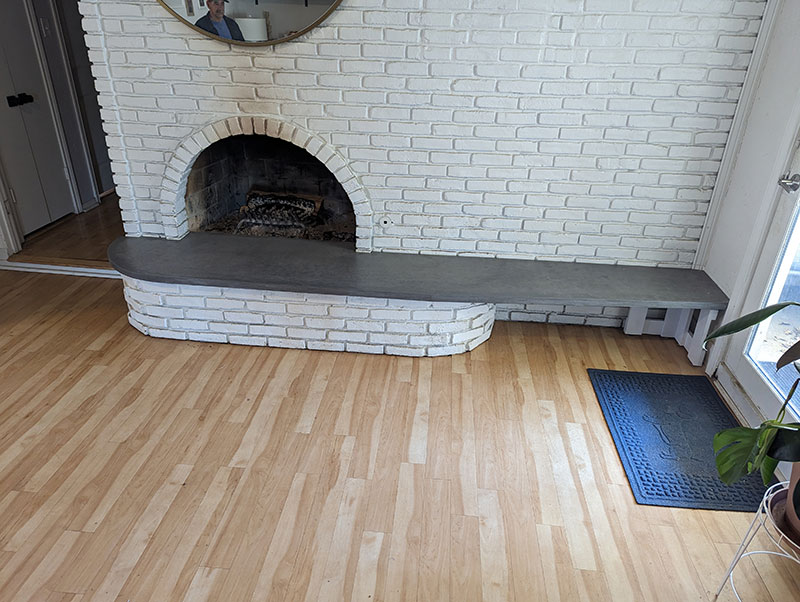"We're Manteling It" - Concrete Mantels
Our Arlington, TX homeowner was definitely looking to improve her fireplace. She had painted it a while back but it just didn’t have the “pop” she wanted. We agreed and suggested that a dark gray concrete mantel with an extended shelf would be just what she needed.

The trickiest part of this project was the templating (making a pattern) as the fireplace surround had multiple angles and the base itself was not perfectly level but we found a way to work with it.
We also built a short bench and painted it white to match the wall so that the mantel would be properly supported. The contrast between the gray and white really works well in this area.

There are a few reasons why you might choose a concrete mantel. For one it’s durable. Concrete can withstand a lot of wear and tear, especially if it has been sealed with a polyurethane like this one was.
We always recommend sealing as this will protect the concrete from staining or wicking up things that get poured on it. This makes it a good choice for mantels that will be used heavily, such as in homes with children or pets.
In this case you could even store firewood on the extended portion but we would recommend putting something in between the wood and the concrete to prevent scratching the sealer.

Another reason is its customizability. Concrete can be molded and shaped into any desired design, making it a very versatile material for custom projects like this.
We took the template to our shop, laid the pattern out on our casting table, installed the mold edges, and poured the concrete mix directly into it.
You can choose from a variety of different colors and finishes to create a mantel that perfectly matches your home’s décor.
Lastly – Fire resistance. Concrete is non-combustible material, i.e., it will not catch fire. This makes it a good choice for homes with fireplaces or wood stoves.

There is one caveat though, it’s important to give freshly made concrete mantels some time (7 to 10 days) to “breathe out” any excess moisture they may have from the casting process, especially if they are installed close to high heat sources.
This is because if there is a lot of moisture in the mantel and it’s exposed to intense heat for an extended period it could spall along the edge that faces the heat since the water inside will try to turn into steam and find a way out of the piece.
Our mantels are made from a special CSA (Calcium SulfoAluminate) cement that is very heat resistant which reduces the chance of this happening, but it is always a possibility.
The installation was a little tricky and we did have to do some grinding on site but all in all the templating was close enough that it didn’t take more than an hour to fine tune it. Once it slid in, we caulked it into place to keep it from moving around. Overall, we think it came out really nice and so did she.

